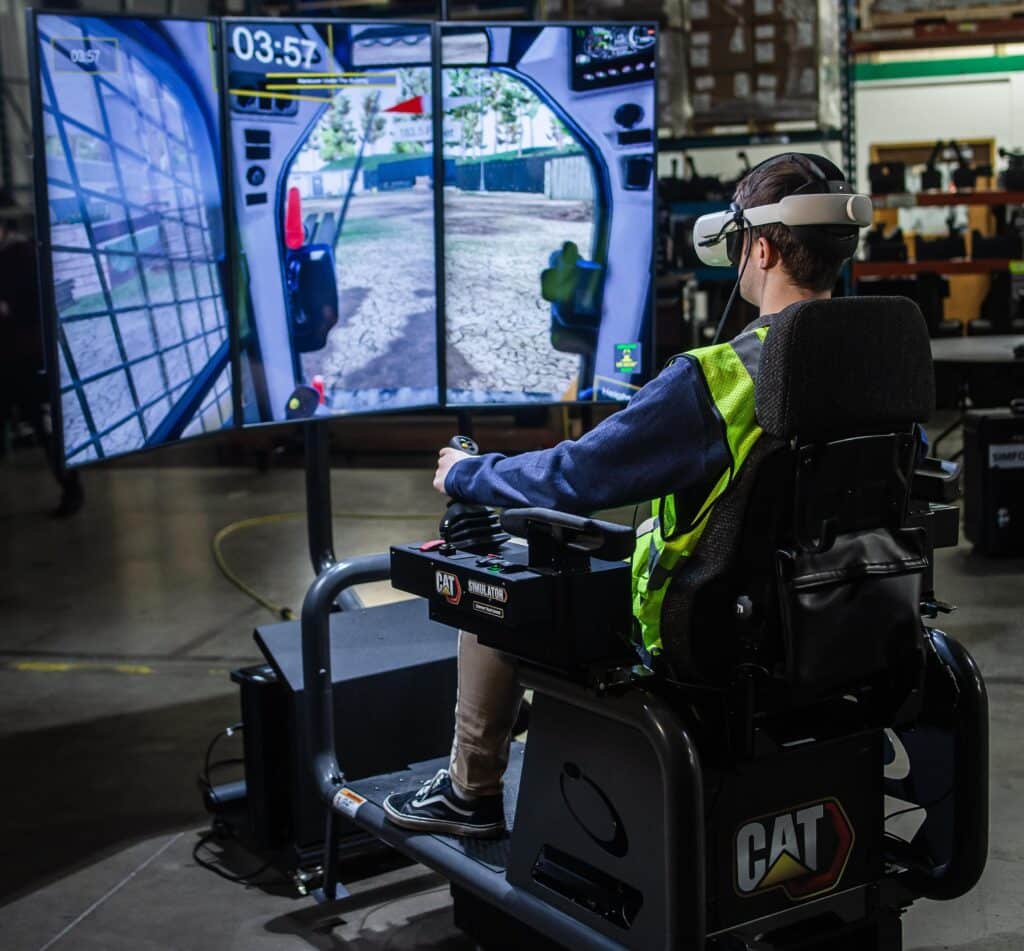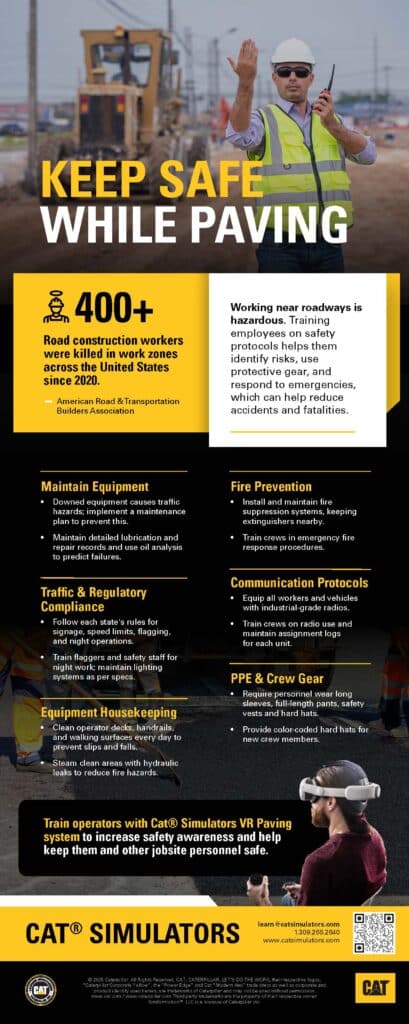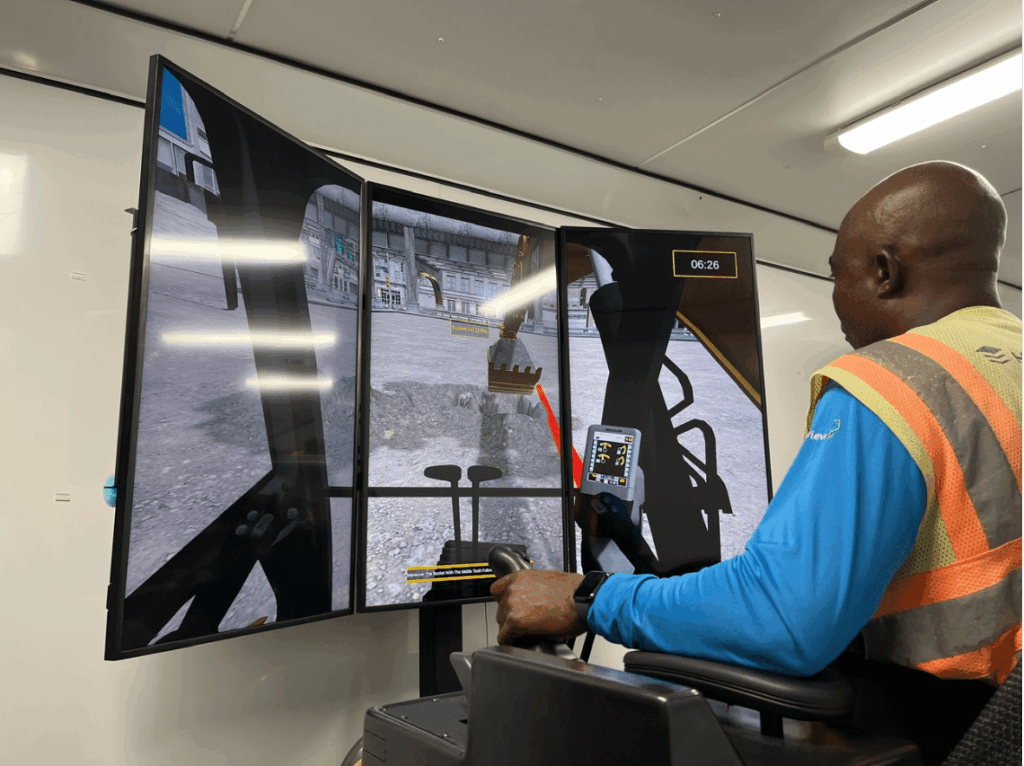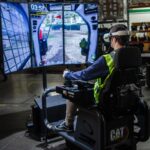Vancouver Island University (VIU) in Nanaimo, British Columbia, continues to lead the way in trades education with its Heavy Equipment Operator (HEO) Certificate Program. It’s a blend of cutting-edge, simulation-based training and hands-on fieldwork, designed to meet the demands of the construction, mining and forestry industries.
To date, more than 3,000 students have successfully completed the HEO training program, which anticipates training an additional 60 to 70 students, according to Kevin Levins, a 20-year veteran instructor in VIU’s HEO program.
With a commitment to staying current with industry trends and technology, the program features four Cat® Simulators systems: Motor Grader, Dozer, Log Loader and Track Feller Buncher. Students receive hands-on training on the simulators to develop foundational skills and real-world techniques.
How the HEO Program Works
For nine weeks, students attend class in classrooms and have access to two trailers that house two Cat Simulators each—one focused on forestry and the other on construction. The two specialized environments allow the university’s three instructors to teach materials tailored to each student’s respective career path while providing hands-on training on the simulators.

“We engage our students with the simulators early on because they offer a safe, low-pressure environment with fuel savings,” said Levins.
He explained that at the end of the nine weeks, students have the option to complete either four or eight weeks of on-the-iron training on real equipment of their choice.
“We have 23 pieces of heavy equipment that they can choose to specialize in. After that, they go to a work experience placement,” said Levins. “Training students on a simulator is an ideal introduction to the field and to how real equipment functions, long before they ever step into an actual machine. They’re not out on a jobsite yet—they’re learning the machine controls in a realistic, safe setting.”
Benefits of Simulator Training for Students and Instructors
Levins shared how the authentic Cat® controls help prepare students effectively to operate the actual equipment. “The motor grader is the most advanced machine to run, and it takes a lot to learn all the controls. But if you can spend a day or two on the simulator, it shaves about a week off the actual training on the real machine,” explained Levins. “It’s just amazing.”
Levins added, “The simulators’ motion system helps substantially too because it gives students a realistic feel of the real machine’s movement.”
“As an instructor, one of the things I really appreciate is the Manager’s [Instructor’s] Workstation. I can connect and monitor the progress of my students,” explained Levins. “In one of my classes, one student in particular stood out. He would spend all of his free time on the machine, upgrading his skills and scores.”
“It was amazing to see how engaged he was, and it truly created new opportunities for him. So much so that now, he’s operating equipment in industry,” said Levins.
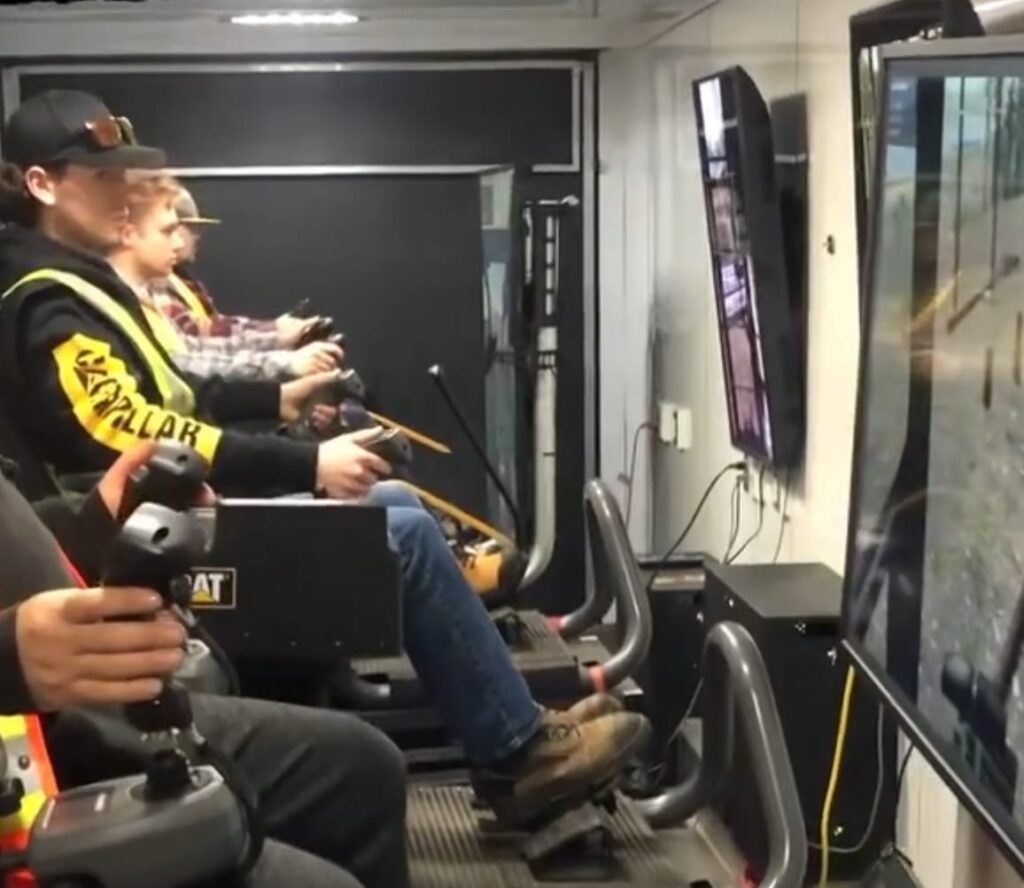
Innovation Meets Industry Standards
A key strength of the program is its close relationship and engagement with the local industry. According to Levins, industry contractors and employers regularly visit the training site to connect with students from construction to forestry.
“We’ve had industry professionals—actual machine operators—come in and share their expertise,” explained Levins. “In my last class, every one of my students was hired after the work experience. Most were hired locally in the civil trade.”
Levins explained that some forestry companies were so impressed with the simulators that they expressed interest in purchasing one for their offices to evaluate potential new hires. “They were interested in using the simulators for when people came in and dropped off a resume, they could have the candidate use the simulator and say, ‘Show us what you’ve got’ before they hired them and had to take them to the jobsite to operate the real machine.”
Promoting the Successful HEO Program
In addition to training current students, the program uses Cat Simulators to introduce potential operators to the construction and forestry industries at career fairs and remote indigenous communities.
“We’ve taken the trailers with the simulators to career fairs to introduce people to the different careers they can pursue. You can’t bring a forestry machine to a career fair or a community event, but you can bring a simulator.” He added, “Some high school students have family who work in forestry, and they’d like to pursue a career in forestry, but they have no way to practice operating a real forestry machine.”

When Levins took a trailer to a local hockey game, where local contractors were raising money for a community project, two goals were accomplished. “It was a great event. They raised over $120,000 for the local community project, and we were able to plant the seeds of opportunity with kids who will hopefully eventually come back and take our training,” shared Levins. “Cat Simulators have positively impacted our program and continue to help us expand it.”
